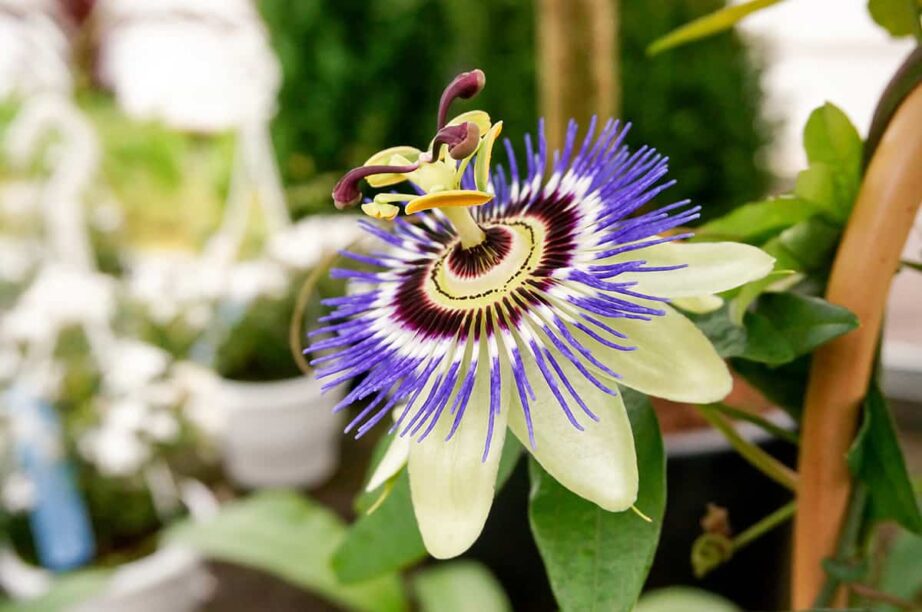If there’s one thing most homesteaders agree on, it’s that multi-purpose plants are absolutely invaluable.
After all, if you’re going to pour a ton of time and energy into cultivating your plants, it’s ideal to maximize your harvest, right? Purple passionflower (Passiflora incarnata) is a perfect example.
Not only is it beautiful, but you can eat the fruits, flowers and leaves, and it’s an absolute pleasure to grow.
A Bit About Passionflower Plants
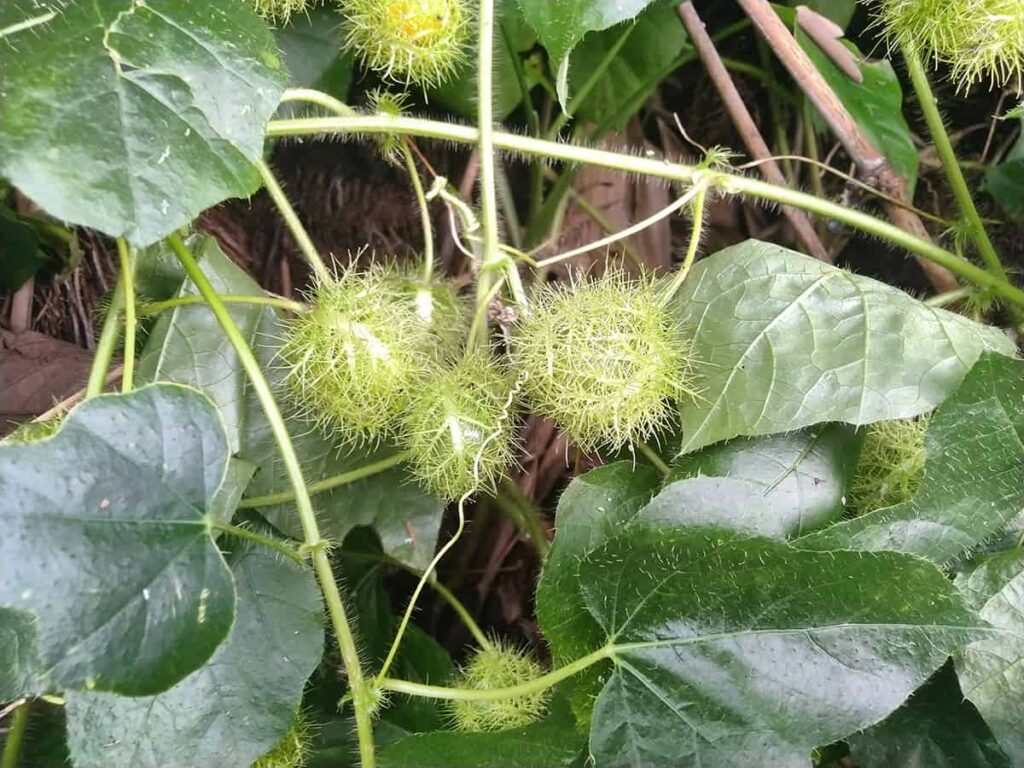
The leaves are alternate and generally have three or five lobes. Meanwhile, the flowers have gorgeous, fluttery blue-white petals and purple corollas, and grow on long, trailing stems.
In fact, these vines can grow upwards of 20 feet in ideal conditions, so consider that when you’re figuring out where to cultivate yours.
Grow your passionflower plants on trellises, arbors, or other frames to keep the fruits from rotting along the ground. Cultivating them on frames also makes it easier to harvest.
Special note: try growing yours around a tall arbor or gazebo, and wait. As soon as flowers appear, they’ll be covered with butterflies and hummingbirds.
Planting Passionflower
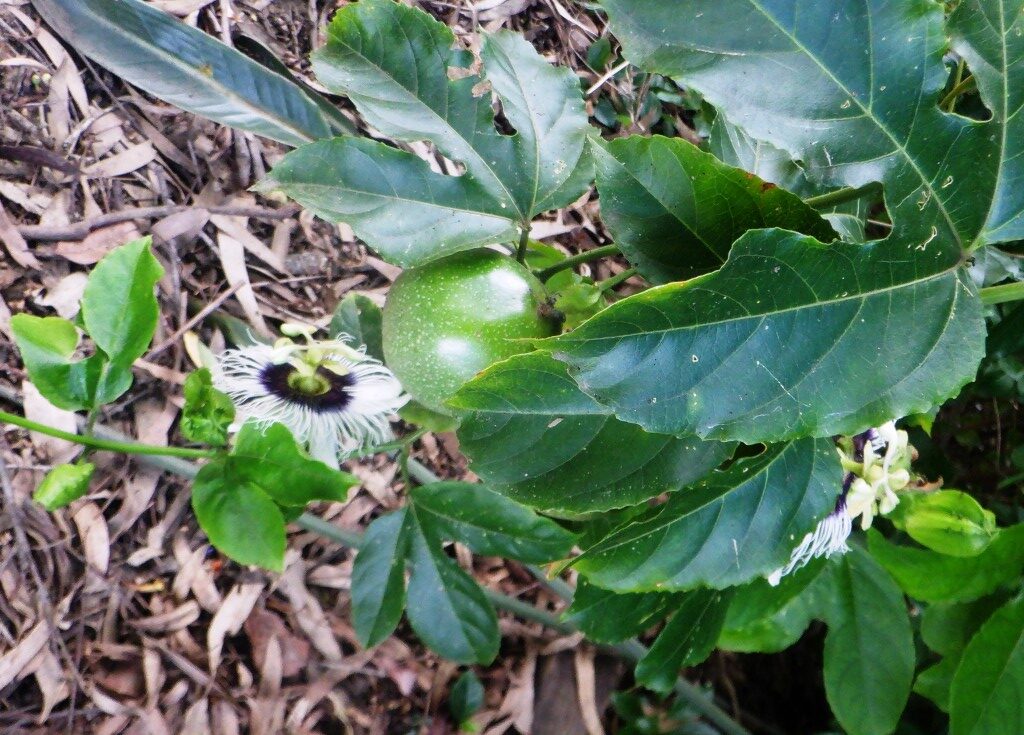
It’s best to buy seedlings or young plants from trusted growers rather than cultivating it from seed.
Yes, you can grow passionflowers from seeds, of course, but they’re difficult to germinate—they can even take months to develop into seedlings. The process is hit or miss, but you may have better luck if you soak the seeds overnight.
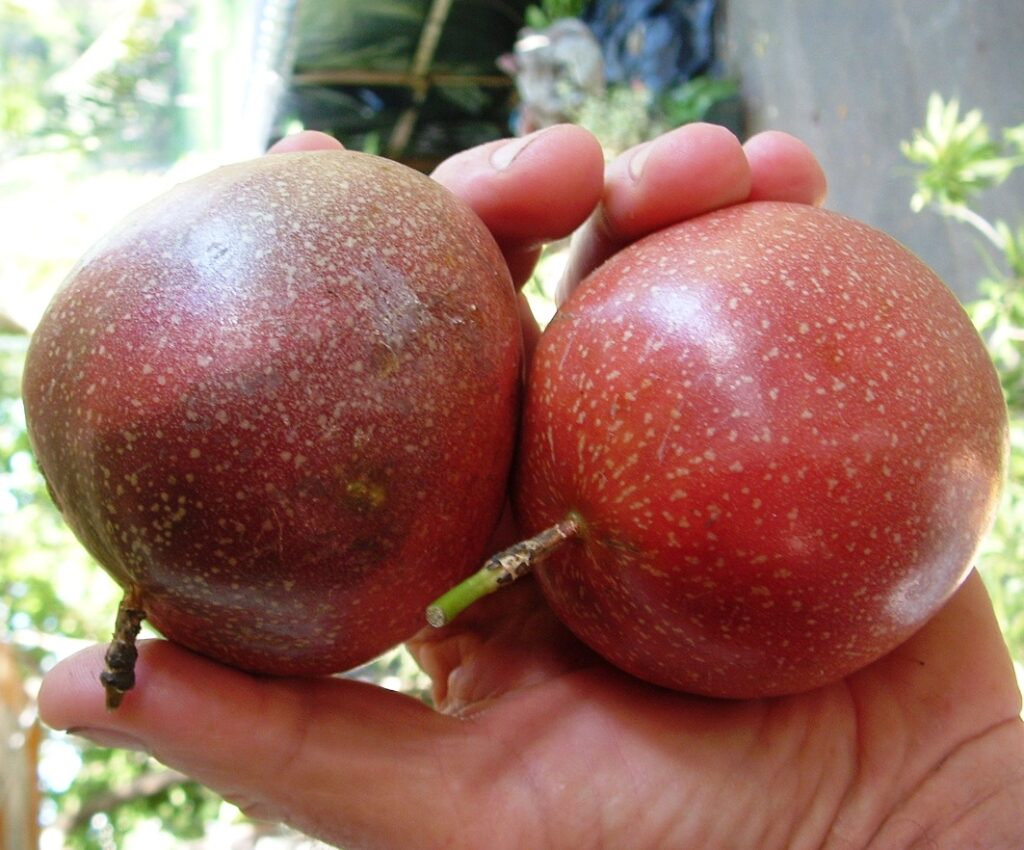
Viable, fertile seeds will sink, while the infertile ones will rise to the top. Toss those out, and plant the viable ones an inch deep into a sterile seed-starting mix. Then cover lightly with extra soil.
Want to have better germination chances? Put an electric heating pad beneath your seed-starting tray, and keep it on low heat. Make sure the soil stays moist, but not wet. Also, keep full-spectrum grow lights on for 8–10 hours a day.
Once the seedlings are a few inches tall, you can transplant them into the garden, or planter pots.
Aim for neutral pH soil in the 5 to 7.5 range, with some well-aged compost mixed into it. If you’re growing yours in containers, be sure to add perlite or volcanic rock to provide plenty of drainage.
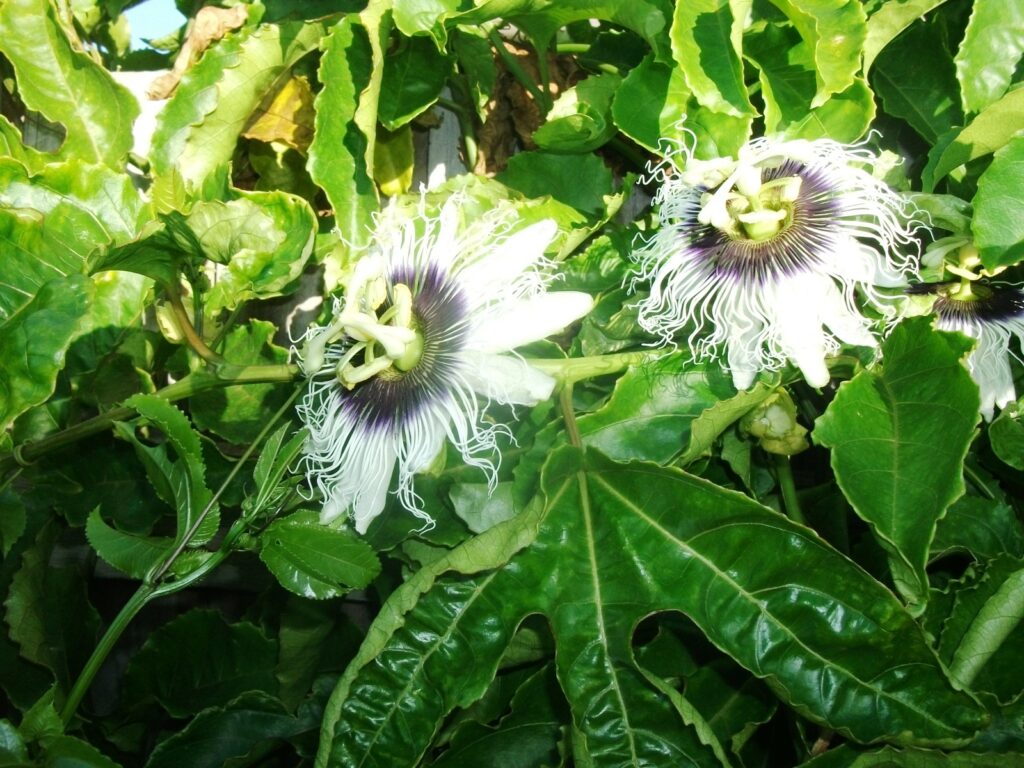
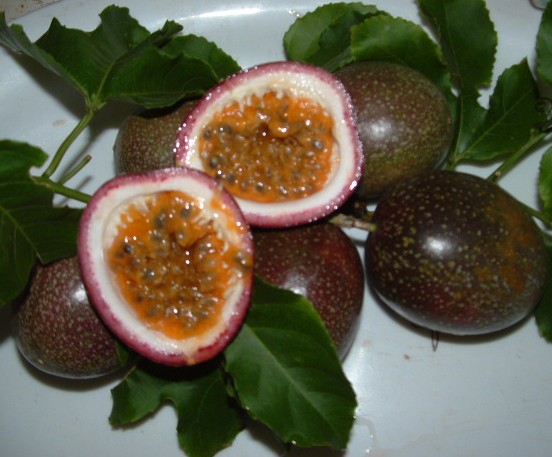
These plants prefer to be in slightly drier soil once mature, and without sufficient drainage, their roots can rot easily.
Now, passionflower plants need a lot of sunshine. And I mean a lot. If they don’t get several hours of direct sun, they won’t even bloom, let alone create any fruits.
The only exception to this is if you live in a scorching climate In this case, your plants will be thankful for a little shade from noon to about 3 pm, so they don’t scorch.
Caring for Passionflowers
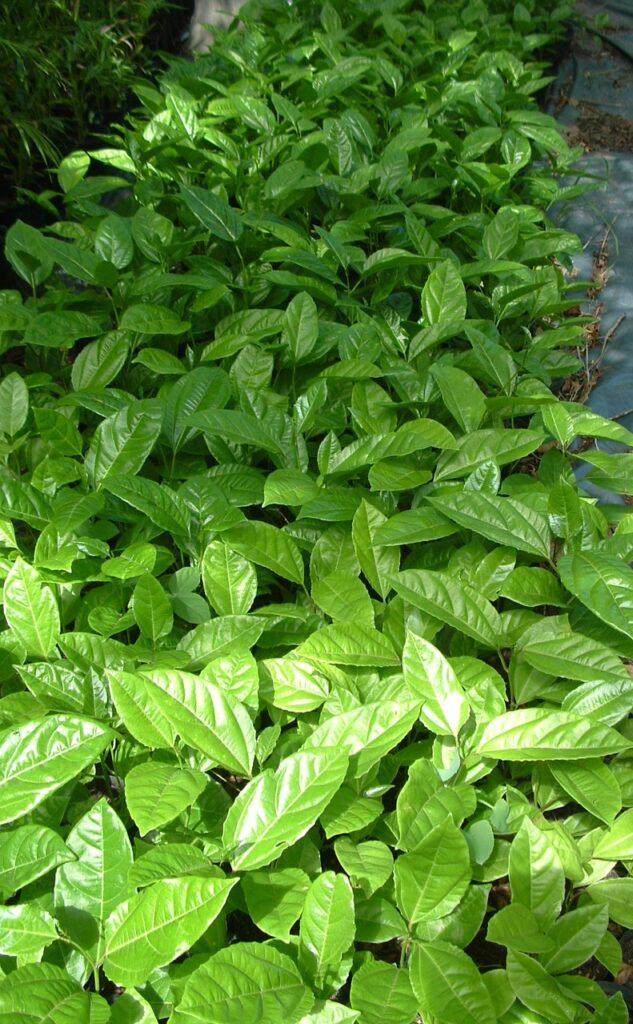
This plant creates “perfect” flowers, and not just its blooms are so magnificent. In botany, perfect flowers have both male and female reproductive organs (e.g. pistils and stamens).
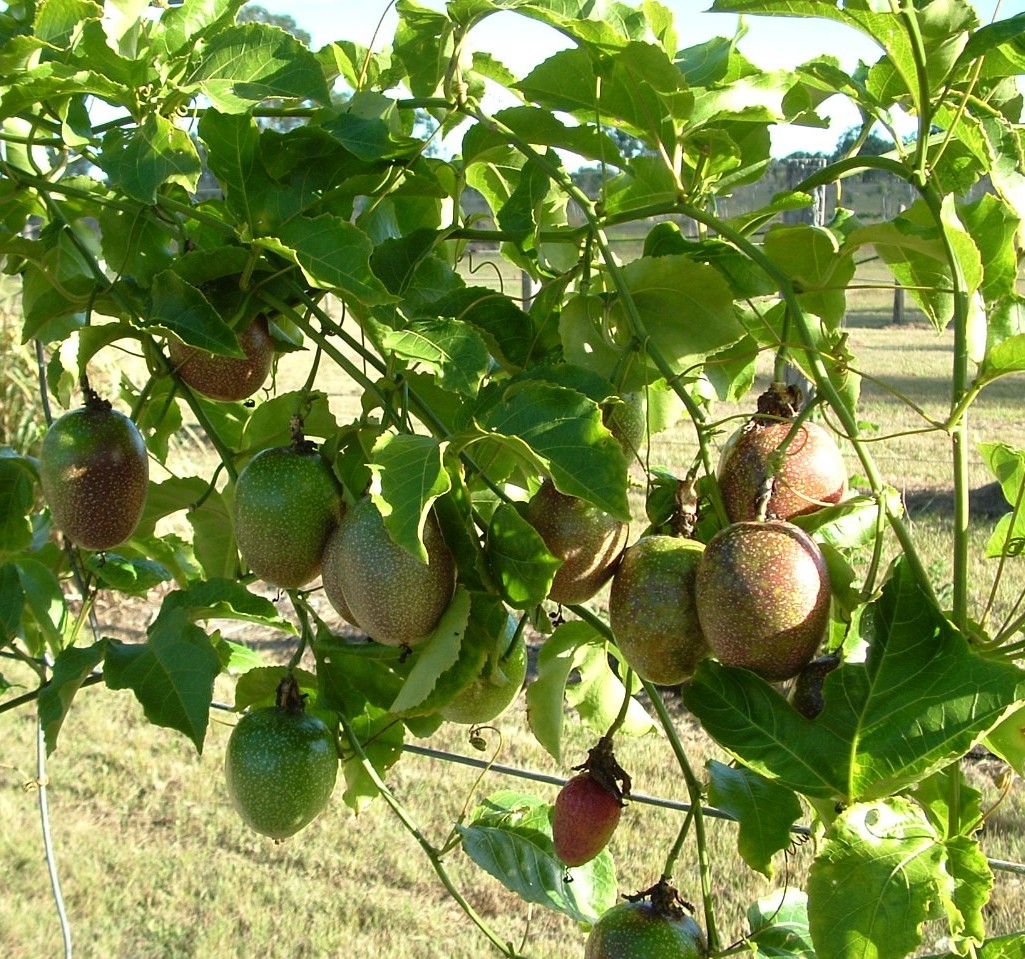
Note that these flowers only bloom for 1-4 days, so if you’re aiming to grow fruits on your plants, you’ll need to dive in with a cotton swab and get fertilizing.
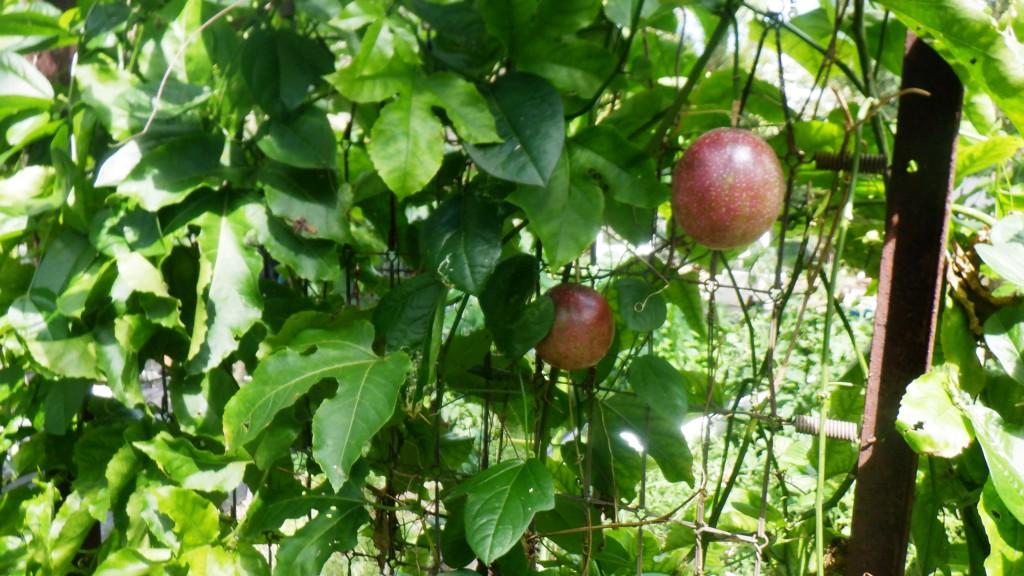
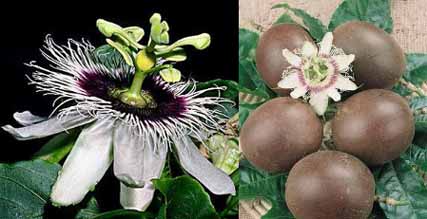
I have a lot of bees where I live and they do a world of good for pollinating my plants. But sometimes it’s better to be proactive, rather than leaving fertilization to chance.
How to Grow Passionflower in Cooler Climates
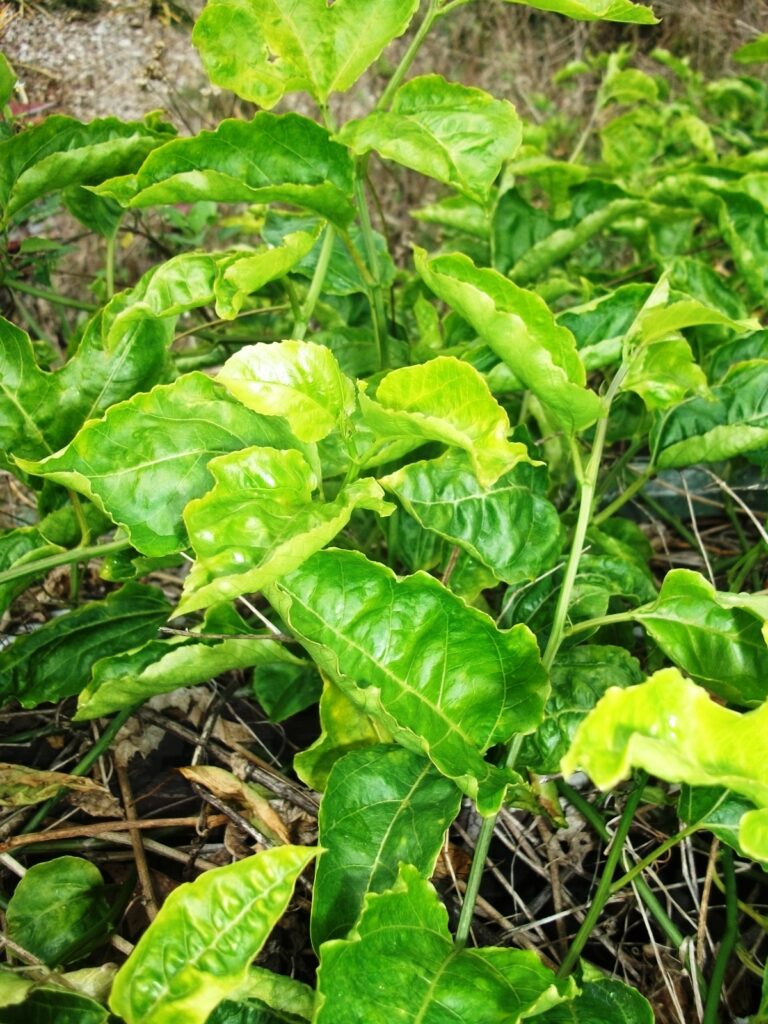
Most people think of passionflower as exotic, sub-tropical kinds of plants. They don’t realize that they can actually be grown pretty much anywhere. The key is timing.
Once summer temperatures have leveled out and don’t cool too much at night, I leave the pots outside full time. At this point, the plants have grown enough that I need to train them up a trellis. These will stay outside until autumn rolls back around, at which point.I still mulch around the plants’ bases with straw. This keeps the delicate roots warm and protected.
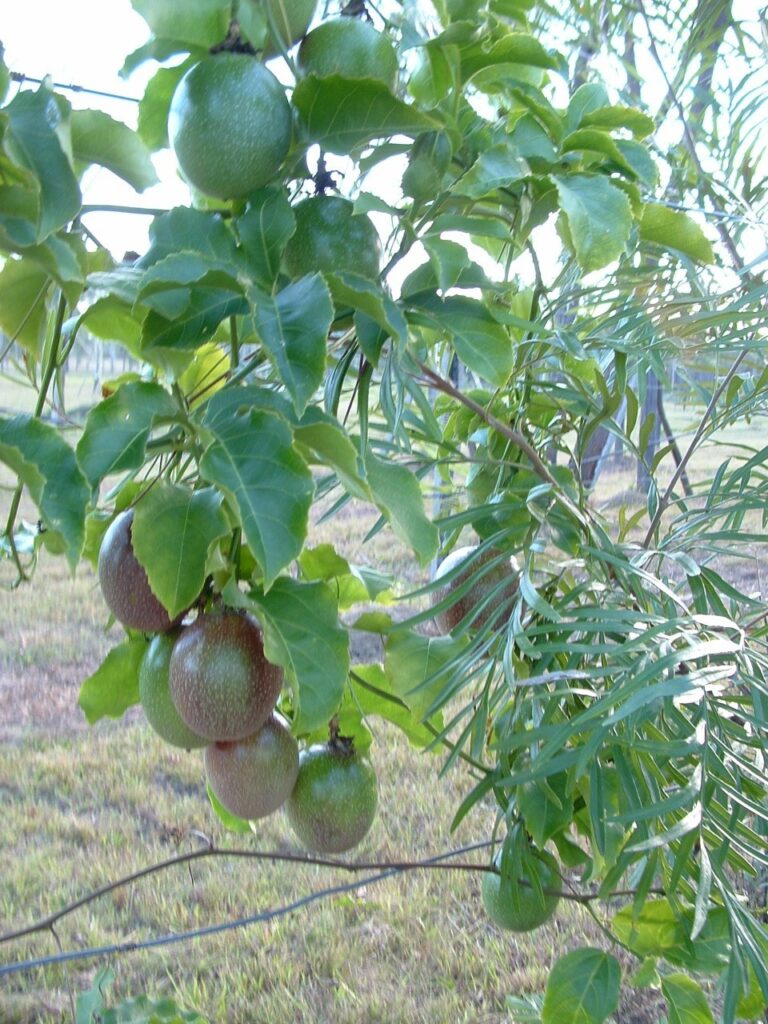
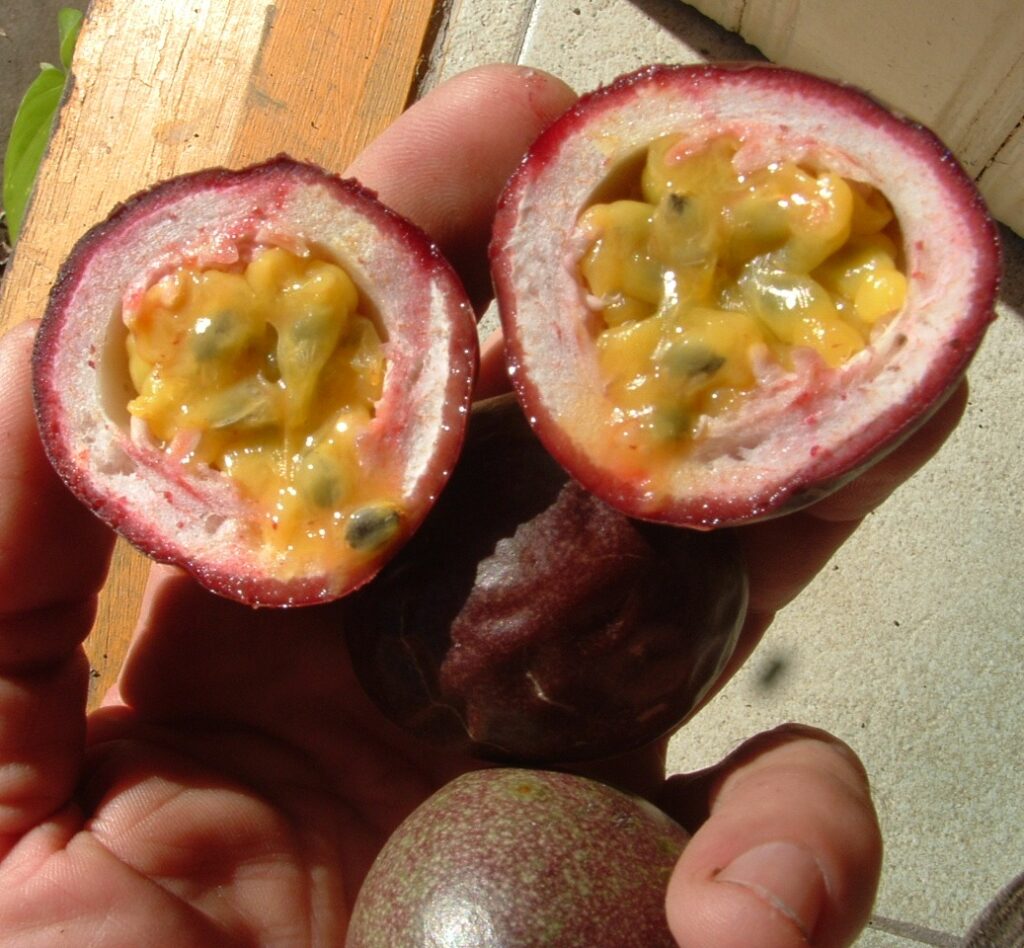
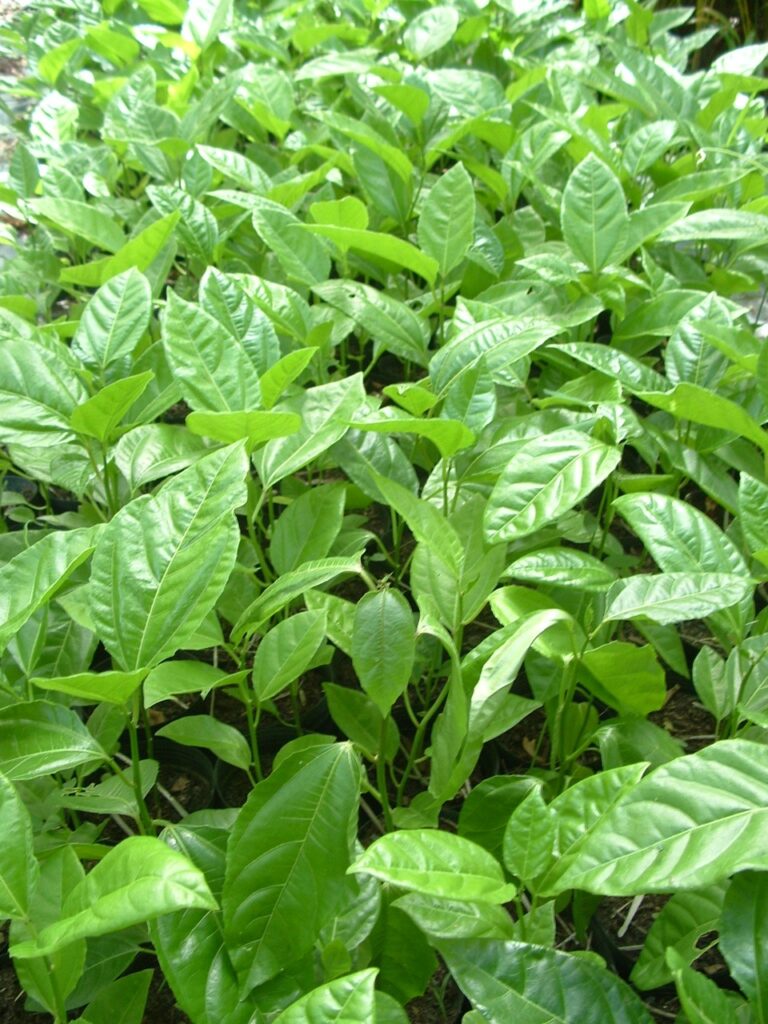
Potential Problems (and Their Solutions)
Passionflower plants are quite hardy, despite how delicate their flowers appear. I’ve never had a problem with mine, but others I know have had some issues with theirs.
One of these potential issues is a pathogen known as fusarium wilt. This hides in the soil and can affect your plants at any time. Keep an eye out for yellowed, shriveled leaves and split stems.
Passionflowers can also suffer from cucumber mosaic virus and root-knot nematodes.
As an added annoyance, keep an eye out if you live in a rural area with a lot of herbivores nearby. I’ve lost fruit to ferral animals, and deer will eat just about everything, including passionflower vines.
Fruit Harvesting
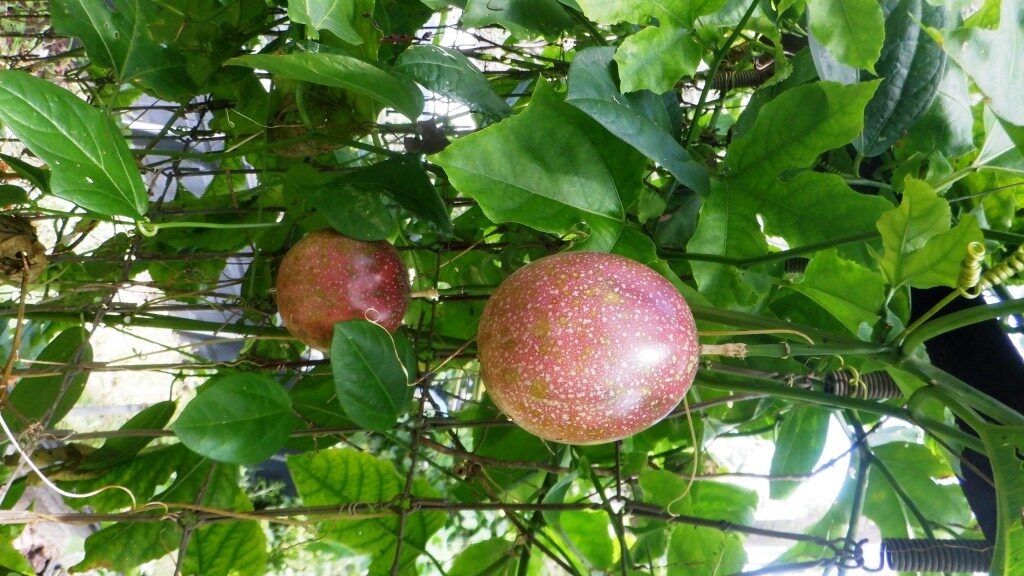
Harvest the hen’s egg-sized fruits—which are also known as “maypops”—when the skins brown and crinkle. They’ll look a bit like brown paper lunch bags after they’ve been used. Squeeze them very gently, and if the flesh “gives” a bit and stays dented, it’s ready.
Twist the fruits off gently, the same way you would pick a tomato. Place these inside baskets, and either eat them immediately or wrap them individually in paper and keep them in the fridge. Never store them in plastic, or they’ll rot to goo if you so much as blink.
Note: super-ripe passion fruits will plop right off the vine. If you find that your fruits are ripening and you may not be home in time to harvest them, that’s okay. Put baskets or blankets beneath the vines for them to fall onto.
To eat them, slice the skins over and scoop out the insides. The seeds within are coated with a kind of slimy (but delicious!) gel and can either be eaten or removed. These seeds can cause a bit of stomach upset in some people, so you might want to err on the side of caution and spit them out.
Passionflower fruits don’t store well, but you can make jam out of them for winter storage.
How to Use Passionflower Medicinally
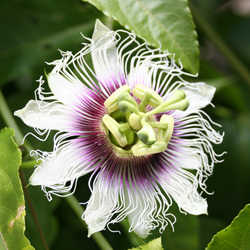
Collect passionflower leaves and flowers when they’re as vibrant and luscious as possible. When they’re in great shape, their components are lively and full of healing goodness.
These can be used fresh, or dried, and are ideal in both tinctures and infusions. I use them in both types of preparations, as tinctures are great to keep on hand for emergencies. Infusions (teas) take a bit more time, but are lovely when sipped in the evening.
Passionflower is a wonderful nervine tonic that has anxiolytic, sedative, and antispasmodic effects. This means that it lessens anxiety, can calm you and help you sleep. It can also alleviate muscle spasms such as menstrual cramps.
In fact, clinical trials show that passionflower is as effective as anti-anxiety benzodiazepines such as oxazepam, just without the negative side effects.
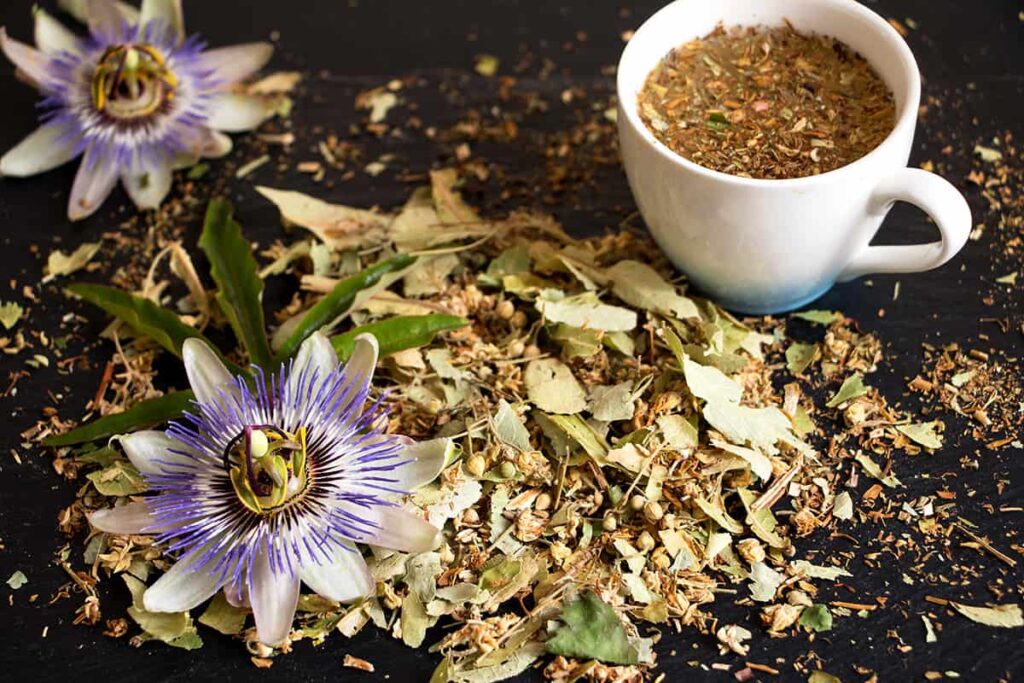
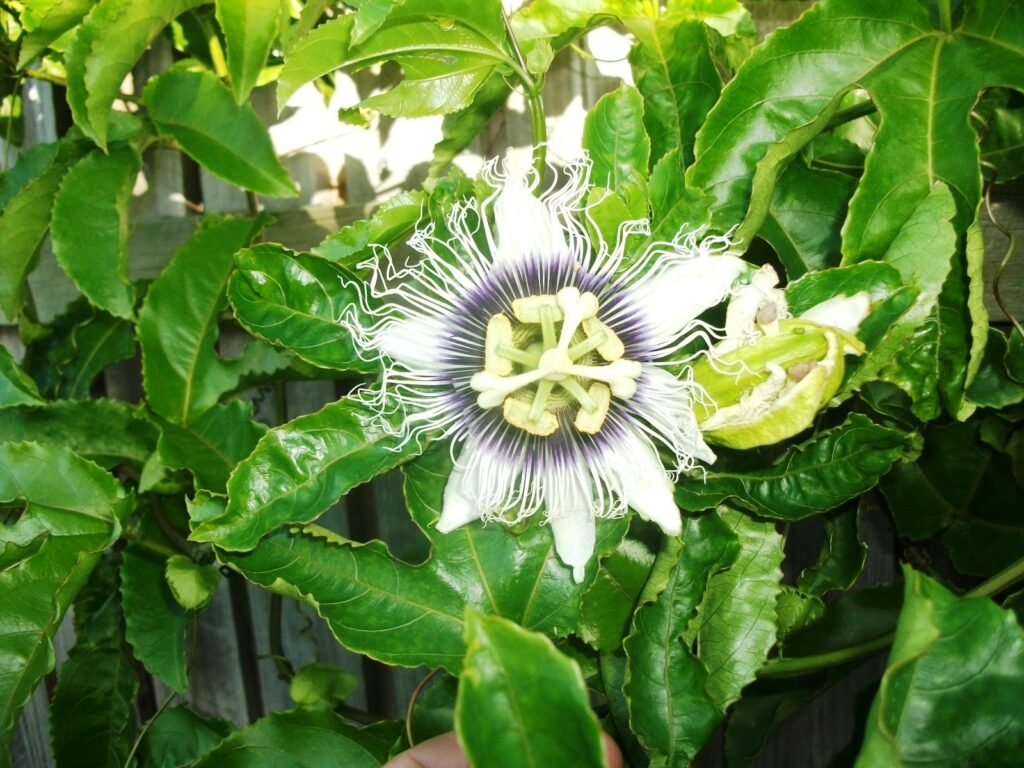
The comparative dosage to achieve similar results was 45 drops of passionflower tincture per day. Some naturopaths recommend 15 drops, three times daily. This allows the effect to be constant throughout the day.
Start with 20 drops in a glass of water or juice to calm anxiety and alleviate insomnia. If you find that isn’t effective, try again with another 10-20 drops.
Should you prefer tea, steep 1 teaspoon of dried passionflower in a cup of boiling water for 10 minutes. Then strain it, and drink it hot. Sweeten with honey, agave, or maple syrup if desired.
A Quick Note:
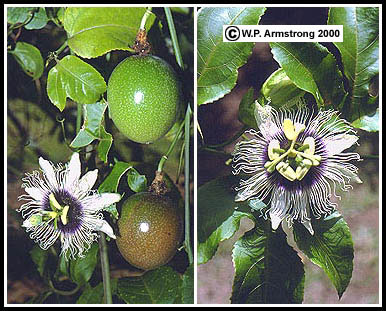
As with all herbal medicine, be sure to do your research before taking anything. If you’re already taking anti-anxiety or antidepressant medication, talk to your healthcare provider.
Additionally, pregnant or nursing women should avoid taking passionflower without professional medical advice.
I USUALLY HAVE THIS ITEM FOR SALE CONTACT ME>> HERE



